MAG Emergency Response: Digital Explosive Ordnance Risk Education in Somalia
By Robin Toal [ Mines Advisory Group ]
CISR JournalThis article is brought to you by the Center for International Stabilization and Recovery (CISR) from issue 27.3 of The Journal of Conventional Weapons Destruction available on the JMU Scholarly Commons and Issuu.com.
Accident Background
On 9 June 2023, a tragic accident involving unexploded ordnance (UXO) in Qoryoley town in the Lower Shabelle region of Somalia claimed the lives of twenty-seven civilians, including twenty-two children, and left fifty-three others injured. The tragedy was caused when several young children discovered a mortar round on the ground in an open playing field that they started to play with and consequently exploded.
Children are particularly vulnerable to UXO as they can be attracted to them for their colorful, shiny, or unusual appearance and are often unaware of how dangerous they are.
“This tragic incident underlines the importance of all parties to the conflict in Somalia to handle ordnance with care, to clear existing mines and unexploded devices, and scale up mine risk education among children and communities.” Wafaa Saeed Abdelatef, UNICEF Representative in Somalia1
Somalia Context
Starting with the Ogaden War in 1977 and continuing with ongoing internal conflicts, Somalia has been left with a grim legacy of remnants of war. The presence of mines and explosive remnants of war (ERW) pose an immediate threat to lives and limit development. Due to numerous conflicts with Ethiopia, the Somali-Ethiopian border remains one of the most impacted areas in the country. Legacy minefields from border conflicts are responsible for most of the conventional landmine contamination in Somalia. In addition to contamination in rural settings, urban areas and main roads are increasingly impacted by non-state armed groups using improvised explosive devices (IEDs) and taking advantage of poorly managed stockpiles of weapons and ammunition.2
Between 2019–2021, fifty-seven incidents related to landmines and ERW were reported, affecting 136 victims. This number is likely to be underreported as there is no centralized reporting system in Somalia.3 Within internally displaced persons (IDP) camps and in rural areas, women are particularly at risk due to their movements to collect water and firewood, herd livestock, and children are at risk as they play. Girls and boys represent 91 percent of the victims of explosive incidents in Somalia, and in 2019, 74 percent of victims were boys.4
The explosive hazard situation in Somalia endangers communities living in and moving through contaminated areas, restricts access to productive land, and reduces access to humanitarian assistance, hindering recovery and development. Whilst the total number of landmines/ERW related accidents and casualties is unknown, the Landmine & Cluster Munition Monitor recorded 3,313 landmine/ERW related casualties in Somalia between 1999–2019. Of these casualties, 1,296 people were killed, 1,664 people were injured, and 353 people have an unknown survival status.5
“UNMAS expresses its sincere condolences to the families affected by this devastating event and shares in their grief and pain during this incredibly difficult time. The loss of innocent lives, especially children, is an immense tragedy that underscores the urgent need for heightened efforts to address the dangers posed by explosive ordnance in Somalia.” ~ Mr. Justin Smith, Chief UN Mine Action Service in Somalia
MAG Somalia DEORE Background
In response to the accident, Mines Advisory Group (MAG) mobilized both headquarters and Somalia based staff to develop a rapid response digital explosive ordnance risk education campaign (DEORE) using paid adverts targeting Meta (Facebook and Instagram) users in the Lower Shabelle administrative region. The ads displayed messages reminding civilians of the threat of UXO and how to stay safe.
MAG Somalia established a Facebook page and built an online following of approximately 11,000 users across the country in 2021 as part of a wider DEORE strategy. MAG Somalia created several digital graphics and videos covering a range of key messages.6 In 2021, MAG Somalia’s DEORE campaign reached 1.7 million people across the country (excluding Somaliland due to donor restrictions).
“The residents benefit from the ads a lot. I’ve learned many things including how to behave properly when encountering an explosive item and how to recognize dangerous areas through warning signs. My behavior has changed a lot because of the ads. I became more careful.” ~ Daud Mohamed Hussein Jamac, 28
MAG Somalia DEORE Emergency Response
MAG Somalia’s response to the tragic accident was to distribute two ads using previously developed materials in the form of a simple graphic and a short video.
While short video is typically the most effective medium to engage users with explosive ordnance risk education (EORE) information, many users have limited bandwidth or use Facebook’s data free service that excludes videos, meaning simple graphics are more effective and accessible for certain audiences. The content was delivered through Facebook and Instagram, the two most popular social media platforms in the country.
The bright red graphic attracts attention and features simplified headings that read “Explosive Remnants of War” and “Danger!” The graphic also features a range of the most common types of mortar devices found in Somalia to enable citizens to better identify ERW in their community.
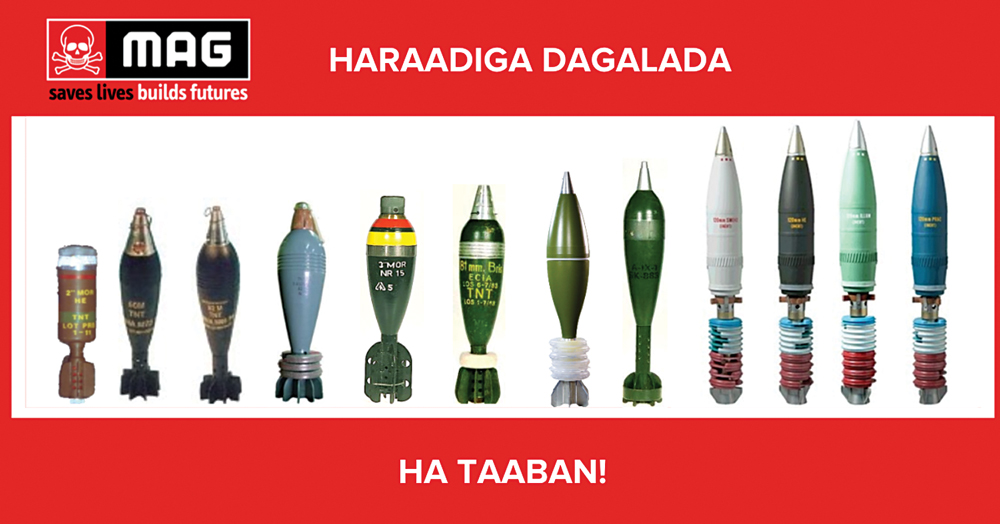
A short video previously co-developed by MAG and Clowns Without Borders International was shared with the target population. This engaging material conveys the critical message of “Stay on the Path” by featuring a cast of entertaining characters who adhere to this guideline. The engaging, distinct key message coupled with playful music primarily aims to attract children and young people and is designed to be easily understood and emulated by the younger audience.
Due to Facebook requiring users to be thirteen years-old to use the platform, the ad includes a request in the supporting text for parents and older siblings to share the content with their children or younger siblings.
Each ad used the introductory text to highlight the recent tragedy near Qoryoley town with the specific location provided to make the incident tangible and of greater relevance to the audience. The text also used emojis to try to attract greater user attention in a competitive and congested social media environment.
MAG launched the two ads on 16 June 2023, six days after the tragic event occurred. Should future DEORE interventions be required in Somalia or other contexts, there is potential for decreasing this response time. As MAG’s capability to deliver emergency DEORE responses via social media improves, MAG is working to upgrade its ability to effectively identify ERW incidents that would benefit from a digital-led intervention through increased internal coordination as well as enhanced cooperation with national mine action authorities. The two ads ran for one month but due to the relatively small audience size, the ad reached the majority of the target audience within two weeks.
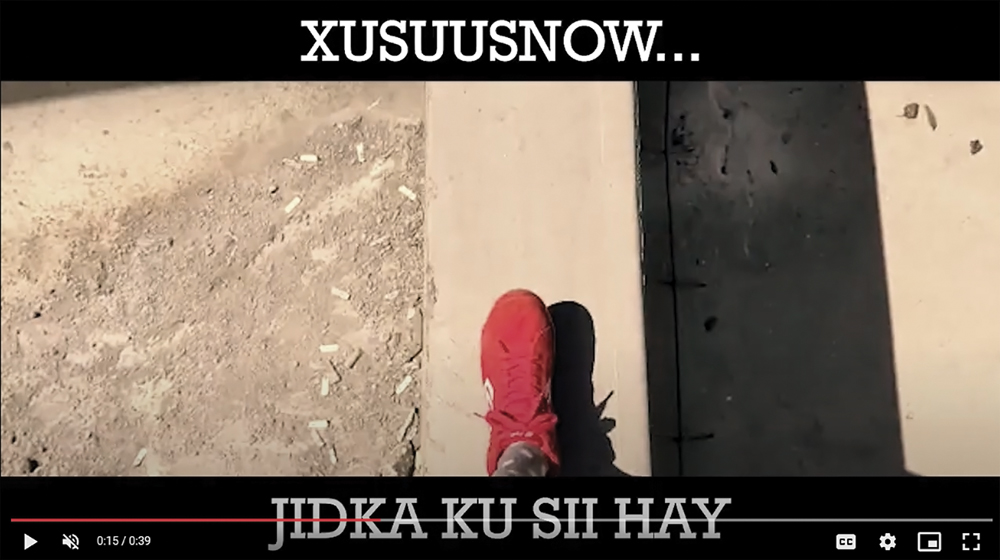
Targeting
Age: Thirteen to sixty-five or older (max range)
Gender: Men and Women
Geographic Locations: Lower Shabelle Administrative Region
Estimated audience: Between 37,000 and 43,000
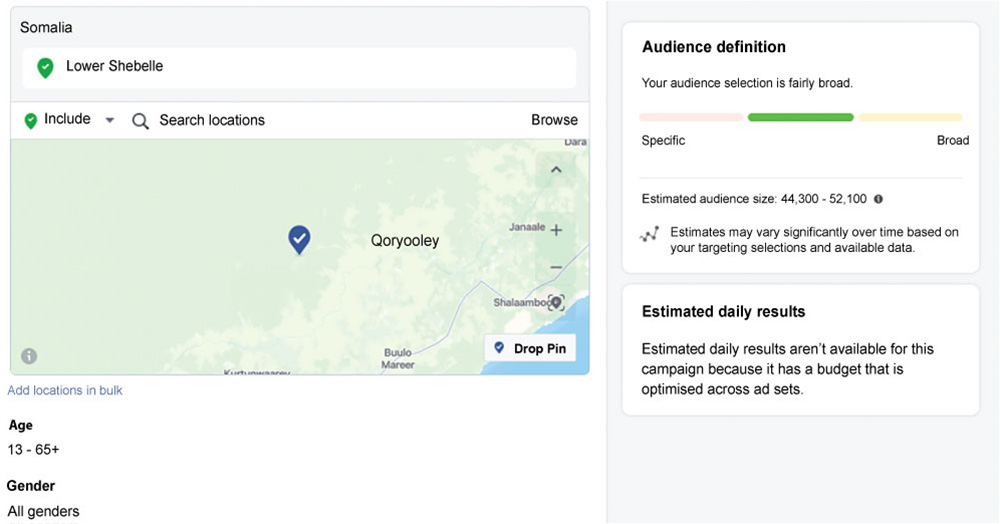
The target area for the ads was the administrative state of Lower Shabelle that includes the town of Qoryoley where the deadly incident cost the lives of twenty-two children. Both men and women were targeted while the age range was set as broadly as possible to reach as many people as possible, ranging from thirteen years-old to over sixty-five years-old.
Budget
The initial budget to deliver the ads was $200 based on a cost estimate to reach the target audience of between 37,000 and 43,000 users. At the close of the campaign, the total expenditure was $200 with the average cost to reach 1,000 users priced at $2.23.
Ad Campaign Duration
Scheduled ads ran for one month from 16 June 2023 to 16 July 2023. Campaigns should typically run between four to six weeks to maximize chances of reaching as much of the targeted audience as possible.
Results
The campaign delivered DEORE materials to 89,589 unique Facebook users within the Lower Shabelle administrative region, significantly more than the estimated audience of up to 43,000. Audiences are estimated by Meta when building the campaign based on the past three months of activity in the area but can vary, especially in volatile environments.
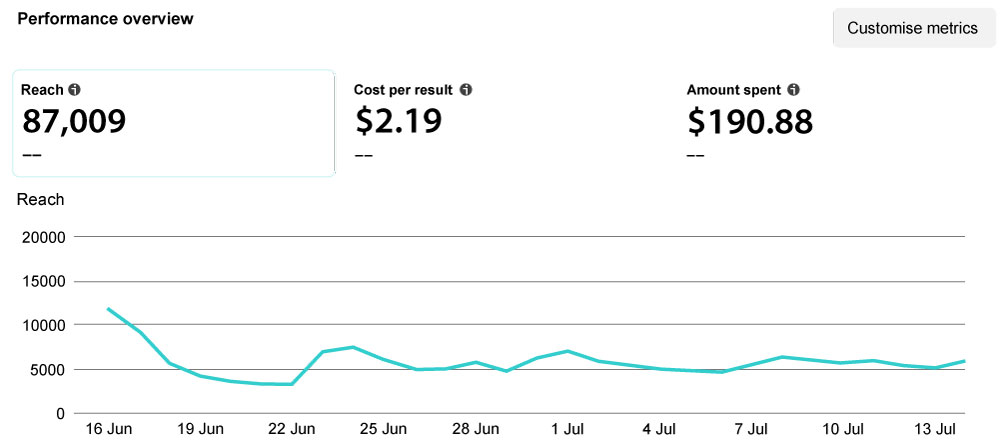
The cost to reach 1,000 unique users in Lower Shabelle was $2.23, which was a little higher than the costs incurred during MAG’s DEORE campaign in 2021 at $1.98. For reference, campaigns in other countries have incurred the following costs: Ukraine ($1.51); Iraq ($2.82); Lebanon ($5.67); Vietnam ($9.27); and Palestine ($11.52).
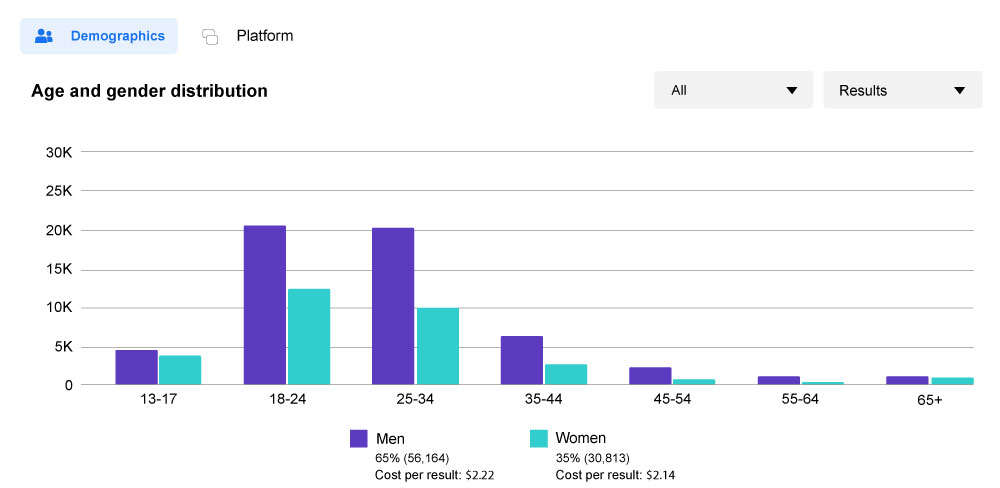
The audience demographic is in line with previous campaigns and social media usage in Somalia, with notably more men than women using the platforms across all age groups, while the two most common age profiles were eighteen to twenty-four years-old and twenty-five to thirty-four years-old.
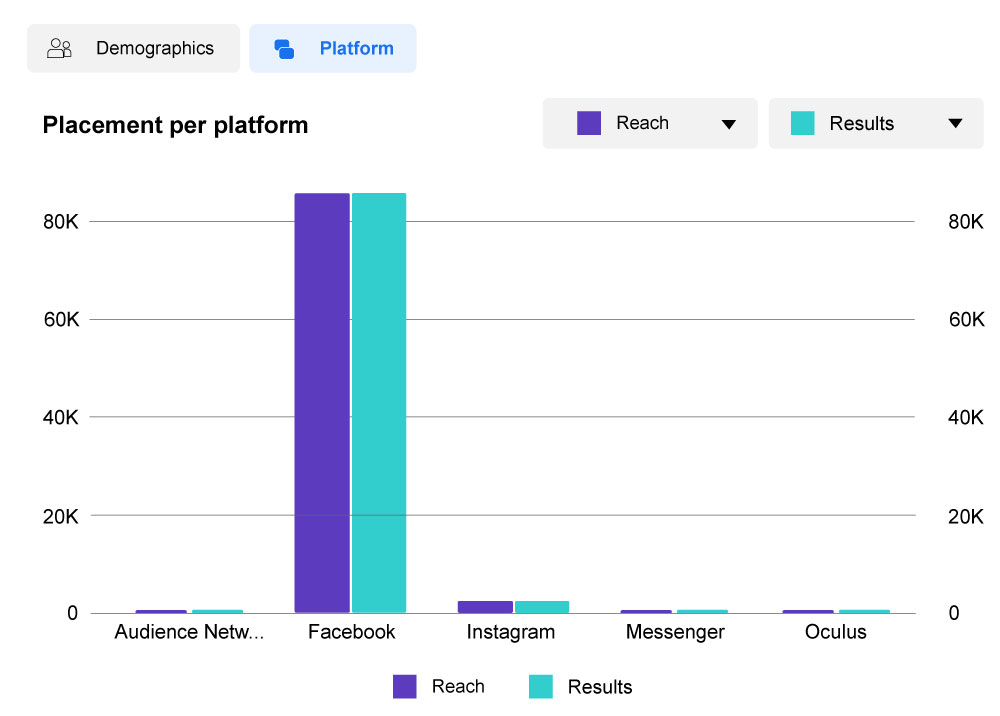
The two ads were delivered across Facebook and Instagram. Facebook’s larger user base compared to Instagram was evident in the results of the campaign. The ads amassed a total of 230,000 impressions, indicating that on average, each user encountered the ads 2.57 times. This frequency amplified opportunities for recall and user engagement.
There were a total of 45,983 page engagements, representing the total number of actions that users took in response to the ads. This demonstrates that more than half of the users took an action in response to viewing the messages, signifying a high level of community interest in the content and that the materials resonated well. Other metrics captured in the tables are explained by a glossary of terms.



| CLICKS | This metric includes link clicks as well as all clicks on other parts of your ad. |
| COMMENTS | A facebook post comment is when someone submits a comment on a piece of content on Facebook |
| COMMUNITY BUILDING | The process of building an online following of users to a Facebook page. |
| CPC (COST PER CLICK) | CPC stands for cost per click. This is the price you pay for each click on your Facebook ad. |
| CTR (CLICK THROUGH RATE) | CTR stands for click-through rate. This is the percentage of people who clicked on the ad after being shown it. |
| FREQUENCY | The average number of times each person saw your ad. |
| IMPRESSIONS | Impressions are the number of times any content from your Page or about your Page entered a person’s screen. |
| LINK CLICKS | This metric measures the number of clicks on links within an ad that users clicked on. |
| NEW PAGE LIKES | The number of likes of your Facebook Page attributed to your ads. |
| PAGE LIKES | The total number of likes on a Facebook page. |
| POST REACTIONS | The number of reactions to your ads. The reactions button on an ad allows people to share different reactions to its content: like, love, care, haha, wow, sad, or angry. |
| REACH | The number of people who saw your ads at least once during the campaign’s lifetime. |
| RETARGETING | Retargeting means delivering ads to an audience based on their previous interaction with your ads. |
| VIDEO TRHRUPLAYS | The number of times your video was played to completion, or for at least 15 seconds. |
Response Evaluation
The Emergency Response mechanism worked effectively in delivering DEORE content to Meta users in the Lower Shabelle administrative region within a reasonable time of the accident occurring near Qoryoley town. Facebook was able to reach more than double the initial number of targeted users in just two weeks and with more than half of respondents engaging with the messages or related page in some way, the response generated a significant level of interest. Without a pre- and post-campaign study or other forms of monitoring and evaluation, it is difficult to measure changes in community knowledge and behavior. However, the digital results demonstrate the potential for temporarily raising awareness about the risks of explosive ordnance (EO) within a targeted population.
Lessons Learned
The effectiveness of the project could be improved in the following ways:
- Response time: MAG’s established presence in-country, close working relationships with the Somali Explosives Management Authority and United Nations Mine Action Service, and existing DEORE materials facilitated a quick response that would have been slowed without existing networks and capacity. However, with the development of guidelines for more effective monitoring and sharing of EO accidents, response times can be improved further. For emergency campaigns utilizing social media, it is important to be aware that there is typically an automated review period for ads, which can take between four and eight hours. Additionally, ads can occasionally be rejected for reasons that might not be immediately clear.
- Materials: Due to a need to respond quickly, existing DEORE materials were used that were suitable but not specifically adapted to the circumstances of the accident. To maximize effectiveness on a digital medium, it is important that materials and surrounding content adds value to users’ experiences by providing relevant and tangible information with practical utility.
- Engagement: To strengthen recall and better influence behavior change, DEORE practitioners should work to encourage engagement through calls-to-action, such as asking users to share the video or tag their friends to help keep their community safe.
- Monitoring & Evaluation: Monitoring and Evaluation (M&E) is limited in an emergency response scenario due to the urgent need to provide risk education to communities as quickly as possible. If time allows, pre- and post-campaign surveys can demonstrate the difference in knowledge, attitudes, and practices but were not possible in this event due to limited capacity on the ground in country and the need to respond quickly to prevent further incidents.
A digital survey conducted during and after the campaign could provide more insights into the initiative’s impact. This approach can be particularly effective when using retargeting to deliver surveys to users who have engaged with the messages.
“Together, we must intensify our collective efforts to eliminate the risks posed by explosive ordnance and safeguard the lives of vulnerable individuals, particularly children.” ~ Mr. Justin Smith, Chief UN Mine Action Service in Somalia
 Robin Toal is Digital EORE Manager at MAG (Mines Advisory Group). He has sixteen years’ experience working in the humanitarian sector in project management, innovation, and behavior change, including the past ten years in humanitarian mine action with MAG and APOPO.
Robin Toal is Digital EORE Manager at MAG (Mines Advisory Group). He has sixteen years’ experience working in the humanitarian sector in project management, innovation, and behavior change, including the past ten years in humanitarian mine action with MAG and APOPO.
| Stay updated | |||

